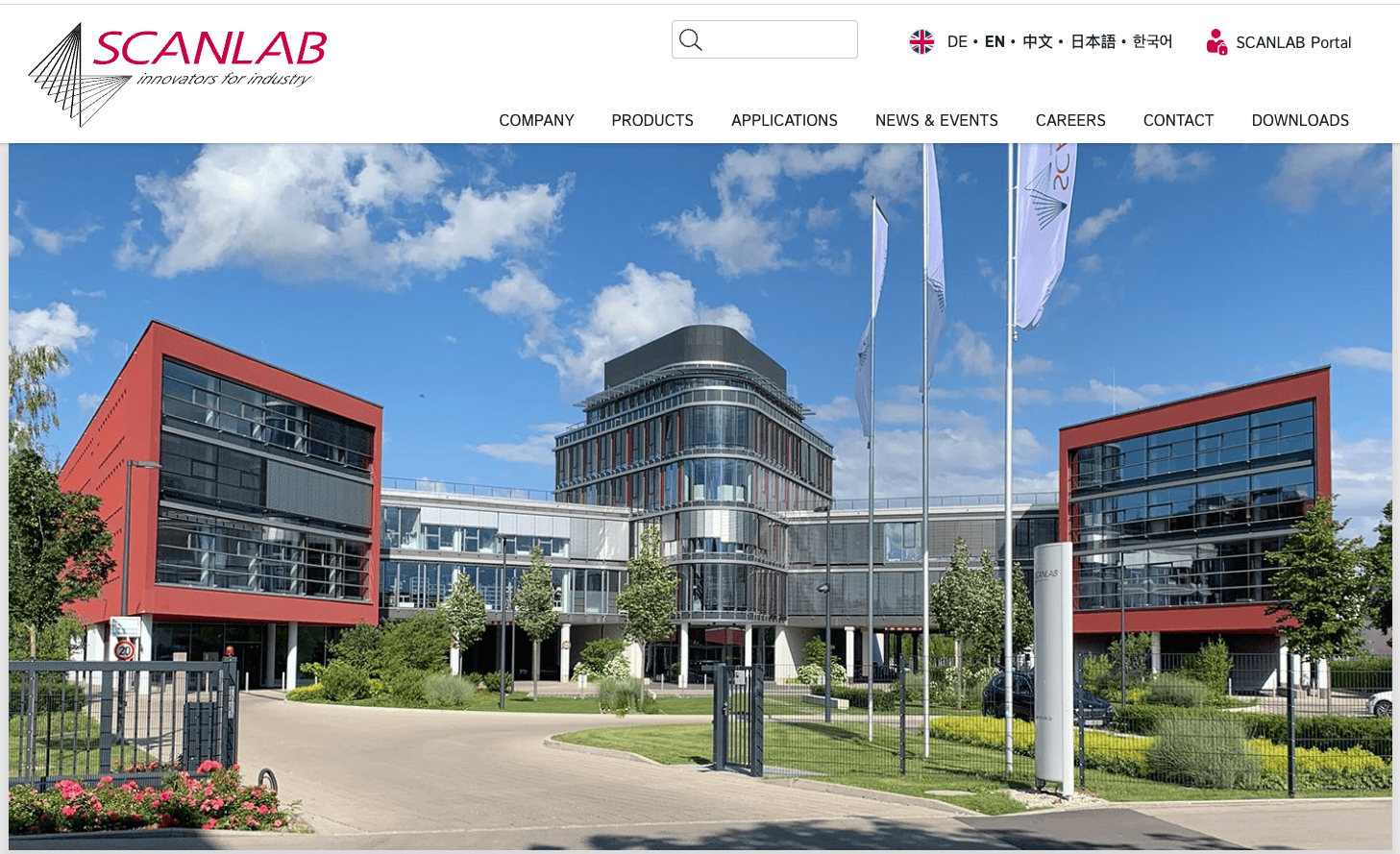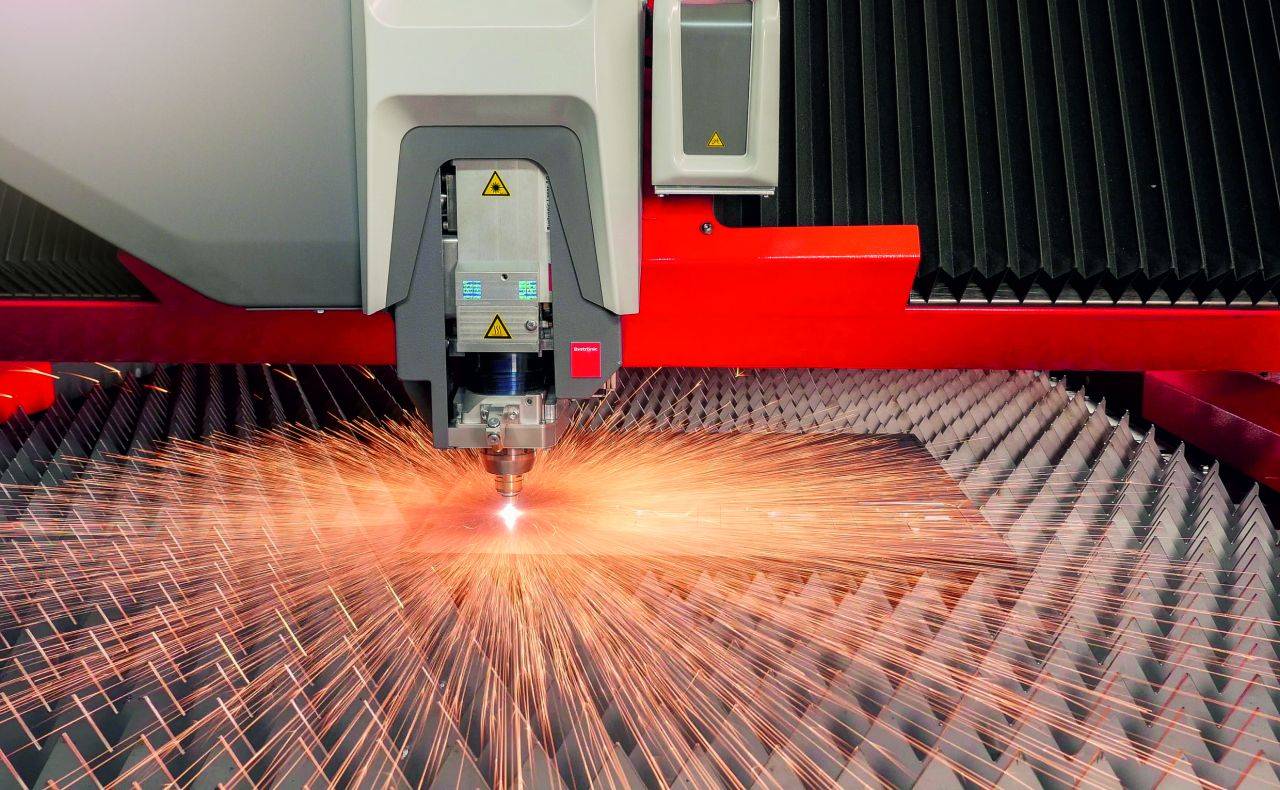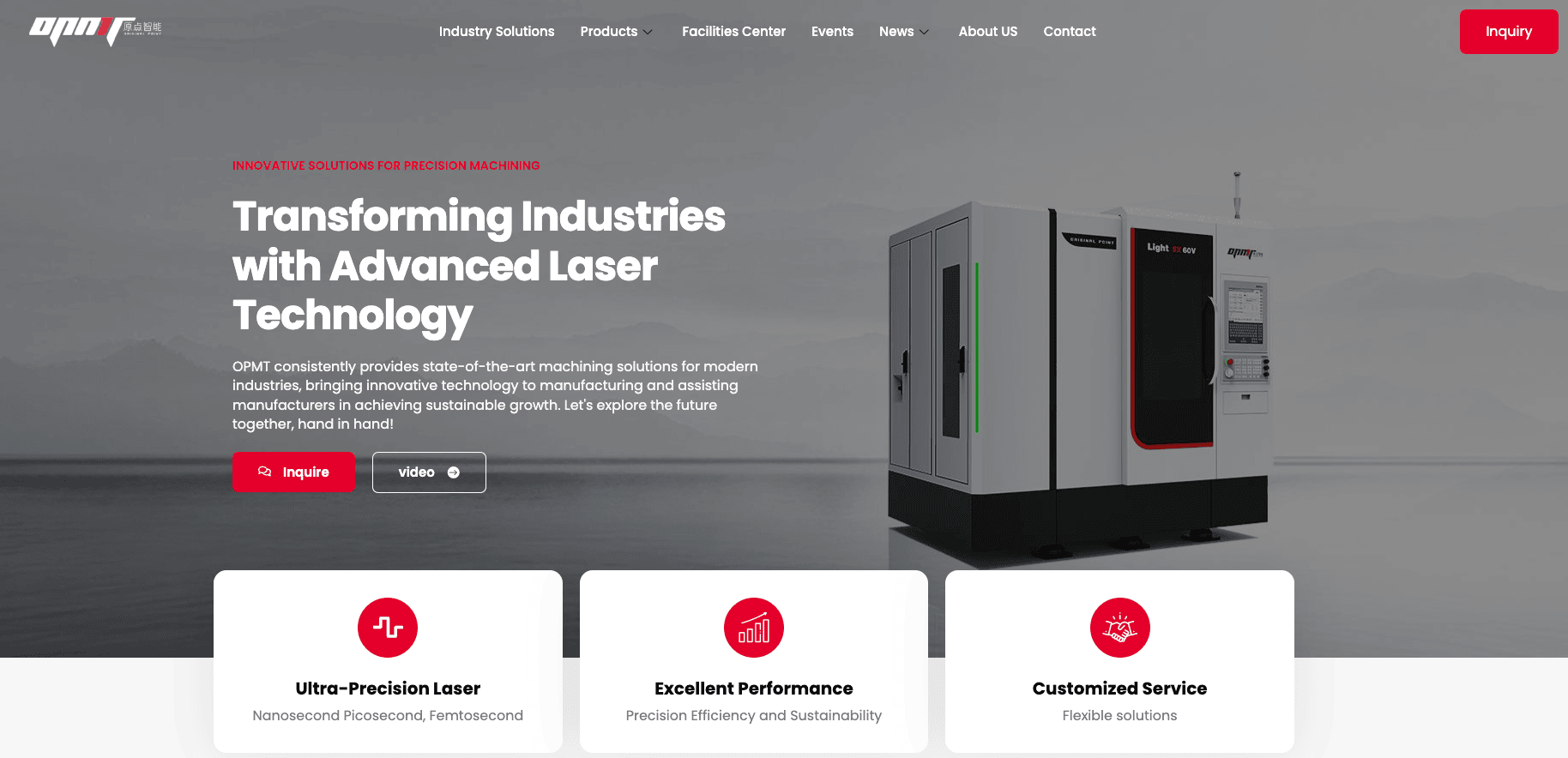The manufacturing landscape is undergoing a revolutionary transformation with Industry 4.0, and laser cutting technology is at the forefront of this change. As we progress through 2025, I’ve witnessed firsthand how smart manufacturing is reshaping the laser cutting industry, creating unprecedented opportunities for precision, efficiency, and automation. The integration of IoT, artificial intelligence, and data analytics with laser cutting machines isn’t just enhancing capabilities—it’s fundamentally redefining what’s possible in metal processing.
The Evolution of Laser Cutting in Industry 4.0
Industry 4.0 represents the fourth industrial revolution, characterized by the integration of digital technologies into manufacturing processes. At its core, this revolution combines IoT, AI, big data, and cloud computing to create highly intelligent and automated production environments. The essence of Industry 4.0 is not merely the adoption of new technologies but a complete reimagining of manufacturing processes.

Laser cutting technology, already widely used in industries such as metalworking, aerospace, and automotive manufacturing, is naturally becoming a central part of this shift. The precision, flexibility, and efficiency that have always been hallmarks of laser cutting are now being enhanced through connectivity and intelligence, creating more synergistic and adaptive production processes.
The impact of this evolution extends beyond performance improvements. With Industry 4.0, laser cutting is becoming more sustainable, with reduced energy consumption and material waste through intelligent process optimization. This alignment with environmental goals represents a significant advantage as manufacturers face increasing pressure to reduce their environmental footprint.
Smart Features Transforming Modern Laser Cutting Machines
Real-time Monitoring and Data Acquisition
Modern laser cutting machines are equipped with sophisticated sensor networks that monitor every aspect of the cutting process. Through IoT connectivity, these systems can observe cutting parameters such as laser power, cutting speed, lens health, and temperatures in real-time. This data can be uploaded to cloud platforms, allowing operators to access vital information remotely.
The ability to monitor machine status continuously provides unprecedented visibility into the cutting process. If cut quality doesn’t meet specifications, IoT-enabled laser systems provide timely warnings, enabling operators to make necessary adjustments quickly. This remote monitoring capability also improves workplace safety, as personnel don’t need to be in the same room as the machine to access critical data.
AI-Driven Precision and Adaptive Processing
One of the most remarkable advancements in laser cutting technology is the integration of artificial intelligence. Modern cutting systems now incorporate cameras and microphones that monitor cutting edge quality in real-time. Unlike traditional setups where operators had to manually adjust parameters, AI-enabled machines can listen and watch the cutting process, optimizing parameters automatically to improve edge quality.
The sophistication of these AI systems is impressive. Through machine learning, current laser cutting systems can determine more than 250 cut conditions. This represents decades of human experience and intuition embedded into the machine’s operation. For example, when a laser operator previously noticed excessive burrs on parts, they would need to manually manipulate focus or adjust cutting speed. Now, machines use AI to adjust cutting parameters on the fly, avoiding such issues entirely.
Predictive Maintenance and Equipment Optimization
Predictive maintenance represents another transformative aspect of Industry 4.0 in laser cutting. By analyzing operational data, these systems can predict when components might fail or require maintenance, minimizing unexpected downtime. IoT-enabled sensors provide real-time data that helps anticipate maintenance needs, ensuring machines operate at peak efficiency.
The impact of predictive maintenance extends beyond avoiding breakdowns. Through continuous monitoring and analysis, these systems can identify optimization opportunities that might otherwise go unnoticed. For instance, a cutting head might detect a burr in a part and, after completing the feature, take pictures of the nozzle to determine if it’s the cause of poor cutting quality. If the nozzle is the culprit, the machine can automatically switch it out and return to the last cut—all without human intervention.
Integration of Laser Cutters in Smart Factories
Equipment Connectivity and Data Analytics
In the Industry 4.0 framework, laser cutting machines are no longer isolated units but integral components of smart factories. Through IoT connectivity, these machines become part of a networked ecosystem, sharing data and coordinating operations with other manufacturing systems. This interconnectedness enables comprehensive monitoring of production processes and facilitates more informed decision-making.
The data generated by laser cutting machines becomes a valuable asset when analyzed properly. With big data analytics, production managers can monitor processes in real-time, predict maintenance needs, and optimize cutting techniques based on historical performance data. This data-driven approach maximizes equipment utilization and ensures consistent quality across production runs.
Fully Automated Production Lines
The integration of laser cutting with fully automated production lines represents a significant advancement in manufacturing efficiency. By incorporating automatic loading and unloading systems, laser cutting machines can operate continuously with minimal human intervention. The collaboration between robots and laser cutting machines enhances production efficiency, particularly in high-volume manufacturing environments.
Automation in laser cutting extends beyond material handling. Robotic systems integrated with laser-cutting machines streamline operations, allowing for continuous and uninterrupted production. This advancement is particularly beneficial in high-volume manufacturing environments, ensuring greater efficiency and cost-effectiveness while reducing labor costs and error rates.
Digital Twin Technology for Process Optimization
Digital Twin technology represents one of the most innovative aspects of Industry 4.0 implementation in laser cutting. These virtual replicas of physical laser cutting systems simulate performance, predict maintenance needs, and allow for real-time adjustments without disrupting actual production. By creating a digital representation of the cutting process, manufacturers can test different approaches virtually before implementing them physically.
The benefits of Digital Twin technology extend beyond process optimization. These virtual models facilitate data-driven insights, enabling manufacturers to make informed decisions about production workflows. By simulating different scenarios, manufacturers can identify potential issues before they occur, enhancing overall productivity and efficiency while reducing costly trial-and-error.
Hymson’s Smart Manufacturing Solutions in Action
At Hymson, we’ve developed comprehensive Industry 4.0 solutions specifically designed for laser cutting applications. Our systems feature advanced connectivity options that enable seamless integration with existing factory systems, facilitating data exchange and coordinated operation across the manufacturing environment. These smart manufacturing capabilities help our clients achieve unprecedented levels of precision, efficiency, and flexibility.
Case Study: Agricultural Equipment Manufacturer
One compelling example of successful Industry 4.0 implementation comes from an Italian manufacturer of agricultural equipment. This company, established in 1926, specializes in grain storage and drying systems that require highly customized metal structures. They needed a solution that could handle the extreme customization their products demanded.
The company implemented a Hymson Model 3015 B 2 Kw sheet metal laser cutting machine as part of their Industry 4.0 transformation. This integration allowed them to achieve higher precision, greater flexibility, and improved efficiency in producing the complex metal components required for their agricultural systems. The exclusive use of top-quality metal materials like galvanized steel, pre-painted steel, and corten steel enabled them to tackle complex construction requirements while guaranteeing longer lifespans for their drying plants.
By connecting the laser cutting machine with their design and production systems, they streamlined their workflow from design to finished product. The result was a significant reduction in production time, improved material utilization, and enhanced ability to meet custom requirements—all while maintaining the high quality that their agricultural customers demand.
Future Trends in Industry 4.0 Laser Cutting
Advancements in Laser Power and Speed
As we look toward the future of laser cutting, we can expect further advancements in laser power and cutting speed. These improvements will allow for faster processing without sacrificing quality—a critical factor for industries dealing with thicker materials or requiring high-speed production cycles. The ongoing evolution of fiber laser technology, in particular, will continue to enhance cutting capabilities across various materials.
These advancements will be especially important for automotive and construction sectors, where production volume and material thickness can present significant challenges. The ability to process thicker materials at higher speeds will open new possibilities for these industries, enabling more complex designs and shorter production times.
Enhanced Customization and Flexibility
The combination of Industry 4.0 technologies with laser cutting enables unprecedented levels of customization and flexibility. Manufacturers can now produce custom parts on-demand without extensive setup changes, supporting the growing market demand for personalized products. This capability is particularly valuable in industries requiring rapid prototyping or small-batch production.
Industry 4.0’s flexible and adaptive production capabilities enable profitable mass customization, allowing the production of small lots or even single unique items without significant setup changes. This adaptability meets the growing demand for personalized products while maintaining efficiency and profitability—a balance that was difficult to achieve with traditional manufacturing approaches.
Convergence with Other Advanced Technologies
Looking ahead to 2025 and beyond, we’ll likely see increased convergence between laser cutting and other advanced manufacturing technologies. Hybrid systems that combine laser cutting with 3D printing, CNC machining, or other processes will enable more complex manufacturing workflows and expand design possibilities. These hybrid solutions will redefine what’s possible in custom fabrication and prototyping.
The integration of different manufacturing processes creates new opportunities for innovation. For example, hybrid systems that combine laser cutting with welding or bending allow manufacturers to create complex components with fewer steps and greater precision. This convergence represents a significant advancement in manufacturing capability, particularly for industries requiring intricate, high-precision components.
Implementing Industry 4.0 in Your Laser Cutting Operations
Assessing Current Capabilities and Planning Integration
The journey toward Industry 4.0 implementation begins with a thorough assessment of your current manufacturing capabilities and future requirements. This evaluation should consider existing equipment, processes, workforce skills, and business objectives. Understanding where you stand today is essential for planning an effective transition to smart manufacturing.
I recommend conducting a detailed analysis of your current production workflow, identifying bottlenecks, inefficiencies, and opportunities for improvement. This analysis will help you determine which Industry 4.0 technologies will deliver the greatest benefits for your specific operation. Starting with foundational elements like basic connectivity and data collection creates a platform for more advanced capabilities later.
Building a Connected Ecosystem
Creating a connected ecosystem is central to Industry 4.0 implementation in laser cutting. This ecosystem should include not only the cutting machines themselves but also related systems like material handling, quality control, and production management. The goal is to create a cohesive environment where data flows freely and systems work together seamlessly.
Integration with Manufacturing Execution Systems (MES) and Enterprise Resource Planning (ERP) systems allows laser cutting machines to become part of the broader factory intelligence network. This connectivity enables automated scheduling, resource optimization, and comprehensive performance tracking—all critical components of a truly smart manufacturing environment.
Workforce Development for Industry 4.0
The technical aspects of Industry 4.0 implementation are just part of the equation. Equally important is developing your workforce’s skills and fostering a culture that embraces technological change. Training programs should address both technical competencies and the mindset shift required for working in a data-driven, highly automated environment.
The role of operators is evolving from manual control to supervision and optimization. Where operators once had to possess hundreds of hours of machine experience to be effective, now machines with embedded AI can guide less experienced operators to achieve optimal results. This shift doesn’t eliminate the need for skilled personnel but changes the nature of their expertise from manual adjustment to system management and optimization.
Common Questions About Industry 4.0 in Laser Cutting
What materials can be processed with Industry 4.0 laser cutting systems?
Modern laser cutting systems can process a wide range of materials with exceptional precision. These include stainless steel, carbon steel, aluminum, nickel, brass, and copper, among others. The integration of Industry 4.0 technologies enhances the ability to work with these materials by automatically optimizing cutting parameters for each specific material type and thickness.
The flexibility of these systems extends beyond metal cutting. Advanced laser systems can also work with non-metallic materials, expanding the application possibilities across various industries. This versatility, combined with the precision and efficiency of Industry 4.0 integration, makes modern laser cutting a remarkably adaptable manufacturing solution.
How does Industry 4.0 improve laser cutting efficiency?
Industry 4.0 technologies enhance laser cutting efficiency in multiple ways. AI-driven optimization automatically adjusts cutting parameters to achieve optimal results, reducing waste and improving throughput. IoT connectivity enables real-time monitoring and adjustment, ensuring that machines operate at peak performance levels continuously.
Predictive maintenance capabilities minimize downtime by identifying potential issues before they cause failures. Automated material handling and production flow eliminate bottlenecks and enable continuous operation. Together, these capabilities significantly increase overall equipment effectiveness (OEE) and production capacity while reducing operational costs.
What ROI can companies expect from Industry 4.0 implementation?
The return on investment from Industry 4.0 implementation in laser cutting operations can be substantial, though the specific numbers vary based on current operations and implementation approach. Typical benefits include reduced downtime (often by 30-50%), increased throughput (typically 15-25%), reduced material waste (10-20%), and lower labor costs through automation.
Additional ROI contributors include energy savings, reduced quality control costs, and the ability to take on more complex, higher-margin work. While the initial investment in Industry 4.0 technologies can be significant, most companies see positive returns within 12-24 months, with benefits continuing to accumulate over time as processes are further optimized.
Conclusion: Embracing the Future of Smart Laser Cutting
The integration of Industry 4.0 technologies with laser cutting represents a transformative opportunity for manufacturers across industries. By embracing smart manufacturing principles, companies can achieve unprecedented levels of precision, efficiency, and flexibility while reducing costs and environmental impact. This transformation isn’t just about technology adoption—it’s about fundamentally reimagining manufacturing processes for the digital age.
At Hymson, we’re committed to leading this transformation with innovative laser cutting solutions that embody the full potential of Industry 4.0. Our comprehensive approach combines cutting-edge hardware with advanced software and connectivity features, delivering integrated solutions that address the full spectrum of manufacturing challenges. From precision metal cutting to complex component production, our systems provide the capabilities needed to thrive in today’s competitive manufacturing environment.
I invite you to explore our range of smart laser cutting solutions and discover how Industry 4.0 implementation can transform your manufacturing operations. Whether you’re looking to enhance precision, increase throughput, or reduce operational costs, our team is ready to help you navigate the path to smart manufacturing success.
For more information about our Industry 4.0-enabled laser cutting solutions, visit https://hymsonlaser.com/fiber-laser-cutting/ or contact our team of experts to discuss your specific manufacturing challenges.






